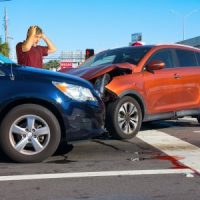Why Georgia’s Intersections Are So Dangerous

While specifically designed to help traffic move smoothly and give other road users, like cyclists and pedestrians the opportunity to cross safely, intersections still end up being one of the most dangerous places for motorists, cyclists, and pedestrians alike. This is simply due to the fact that a collision is a lot more likely to occur in any location where multiple people are moving in different directions. Even a small mistake on one person’s part could be enough to initiate a chain reaction of events leading to a collision. In fact, as many as one-quarter of all fatal traffic accidents and half of all traffic injuries in the U.S. occur in intersections.
Distractions and Inattention
People are often impatient, so it’s not uncommon for someone who feels like they have been waiting at an intersection to look outside the car, get on their phone, or simply stop paying attention. In other cases, a driver may fail to slow or stop at an intersection at all, rushing to beat a light. Both scenarios are extremely dangerous, as constant observation is a critical part of safe driving, especially when someone is at an intersection and potentially facing traffic from three different directions. Failing to monitor one’s surroundings, inadequate surveillance, and general inattention are some of the most common contributors to intersection accidents in the U.S. When combined with misjudgments of speed or space, or illegal maneuverings, failing to pay attention can have devastating consequences at intersections.
Visibility Problems
Intersections are supposed to be designed so that all users have clear lines of sight in every direction. Unfortunately, the reality is often quite different, with buildings sometimes placed too close to the edge of the road, parked vehicles, and even overgrown vegetation making it hard, if not impossible to see other motorists, cyclists, and pedestrians. Many crashes at intersections involve these kinds of obstructed views, which basically prevent drivers from seeing hazards in time to avoid a collision.
Failing to Signal
Turn signals and brake lights exist specifically to allow us to communicate with other drivers, letting them know when we intend to slow down, turn, or merge. Unfortunately, a lot of drivers, whether out of distraction or haste, fail to use these methods of communication, leaving other road users in the dark as to their intent. This is particularly dangerous at intersections, where vehicles are constantly turning, making u-turns, stopping, and slowing down. Failing to notify other road users of driver intent is not, however, always because the motorist in question chose not to use his or her signals. Instead, a driver could have failed to properly maintain his or her vehicle, letting the lights burn out and failing to get them fixed. Both are forms of negligence and can open a driver up to liability for an intersection accident.
Financial Recovery for Your Intersection Accident
At Shiver Hamilton Campbell, we know the kind of physical, financial, and emotional toll that car accidents can take on victims and their families, especially when they were not at fault for their crash. Fortunately, it is possible to hold negligent drivers accountable for their actions, so if you were hurt in an intersection accident and have questions about your recovery options, don’t hesitate to call 404-593-0020 and set up a meeting with one of our experienced and compassionate Roswell car accident lawyers today.
Sources:
highways.dot.gov/safety/intersection-safety/about
crashstats.nhtsa.dot.gov/Api/Public/ViewPublication/811366


